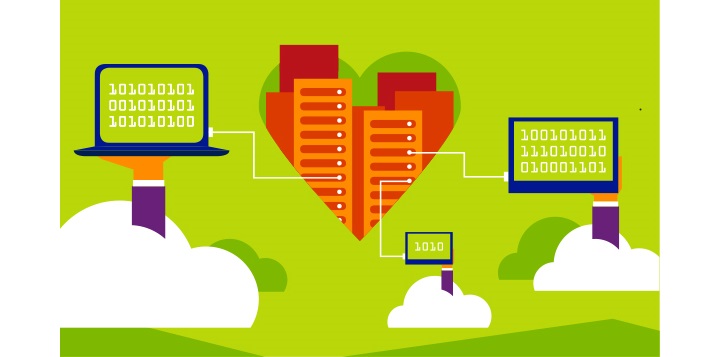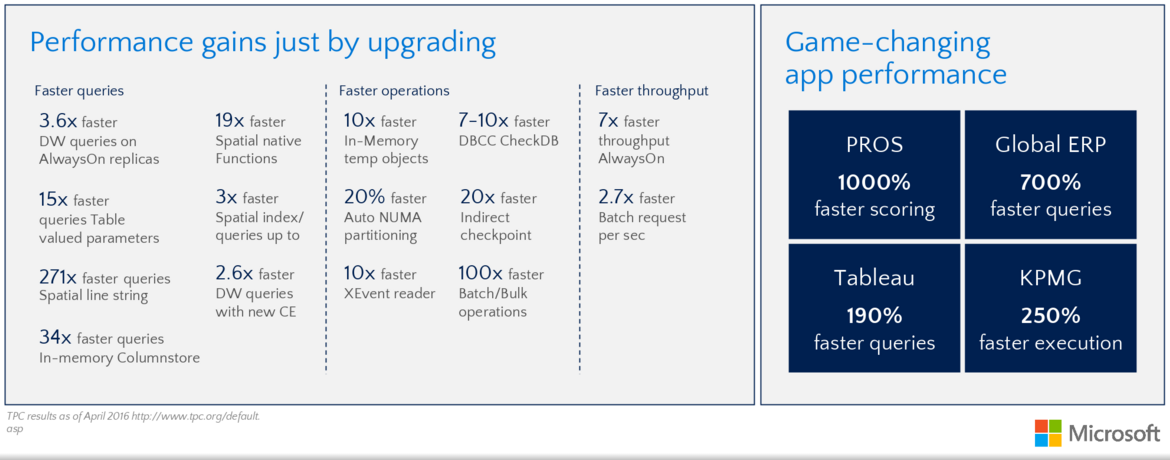The next version of SQL Server, Microsoft’s flagship database product, will launch on June 1, the company announced today.
The release follows Microsoft’s usual round of public previews and release candidates since the company first announced this update in 2015. Maybe the biggest difference between this release cycle and others is that the company first tested many of the new features of SQL Server 2016 in its Azure cloud.
As we reported earlier this year, the focus of this update is on speed and security (with the ability to perform some queries on encrypted data without having to decrypt it first), but with this new version, Microsoft is also positioning SQL Server as a solution for data warehousing and big data analytics, thanks to both its built-in R support and its ability to store and query both structured and unstructured data.
Clearly, though, Microsoft is most excited about the speed-ups the update promises — even without making any hardware changes. The company promises that most queries should now run an average of 25 percent faster than before (on the same hardware). Microsoft also today announced a new Lenovo benchmark that shows SQL Server 2016 running on Windows Server 2016 (which is still in preview) handling a standard database test using 30 terabyte of data faster than any of its competitors.
As DocuSign VP of platform engineering Eric Fleischman told me, his company currently uses SQL Server 2016 for storing the metadata of the tens of thousands of transactions per second its users create on the service, among other parts of its system. DocuSign has been testing SQL Server 2016 and Fleischman called the performance gains it has been able to achieve “off the charts.” These performance gains, as well as the addition of availability groups, are what DocuSign is most excited about in making the switch to the 2016 edition.
Asked why DocuSign didn’t opt for one of the many open-source competitor to SQL Server, Fleischman told me that he looks at choosing SQL Server as essentially a hiring decision. “When you pick SQL [Server] or anything else, you are making a hiring decision,” he said. “Are they going to help me? We don’t want to go write a database. We want to work with a team that builds databases. That’s why we are staying on this train. The team is receptive and helps us.”
With SQL Server 2016, Microsoft is also now giving its customers to stretch their database to Azure in case they need a bit more power than their on-premise servers can offer.
As Microsoft also today announced, SQL Server 2016 will come in four editions: Enterprise, Standard, Express and Developer.
The Developer edition, it’s worth noting, will be available for free and will offer all the features of the full enterprise edition — though its license forbids using it for production use cases. The other free edition is the Express edition, which can be used in production, but it can only use up to 1GB of RAM and the maximum database size is 10 GB. It also doesn’t offer some of the more high-end features of the Standard and Enterprise editions, including some of the advanced high-availability, security, business intelligence and data warehousing features.
As Microsoft senior director of Data Platform marketing Tiffany Wissner told me, the pricing for the enterprise and standard editions won’t change from what Microsoft currently charges for the 2014 version (with the exception of the developer version now being available for free). She also noted that the team will likely continue the same pattern of first releasing new features on Azure and then bringing it to the boxed versions of SQL Server after this release in July. She did say, though, that the team is looking at what all of this means for the overall release cadence of SQL Server.

